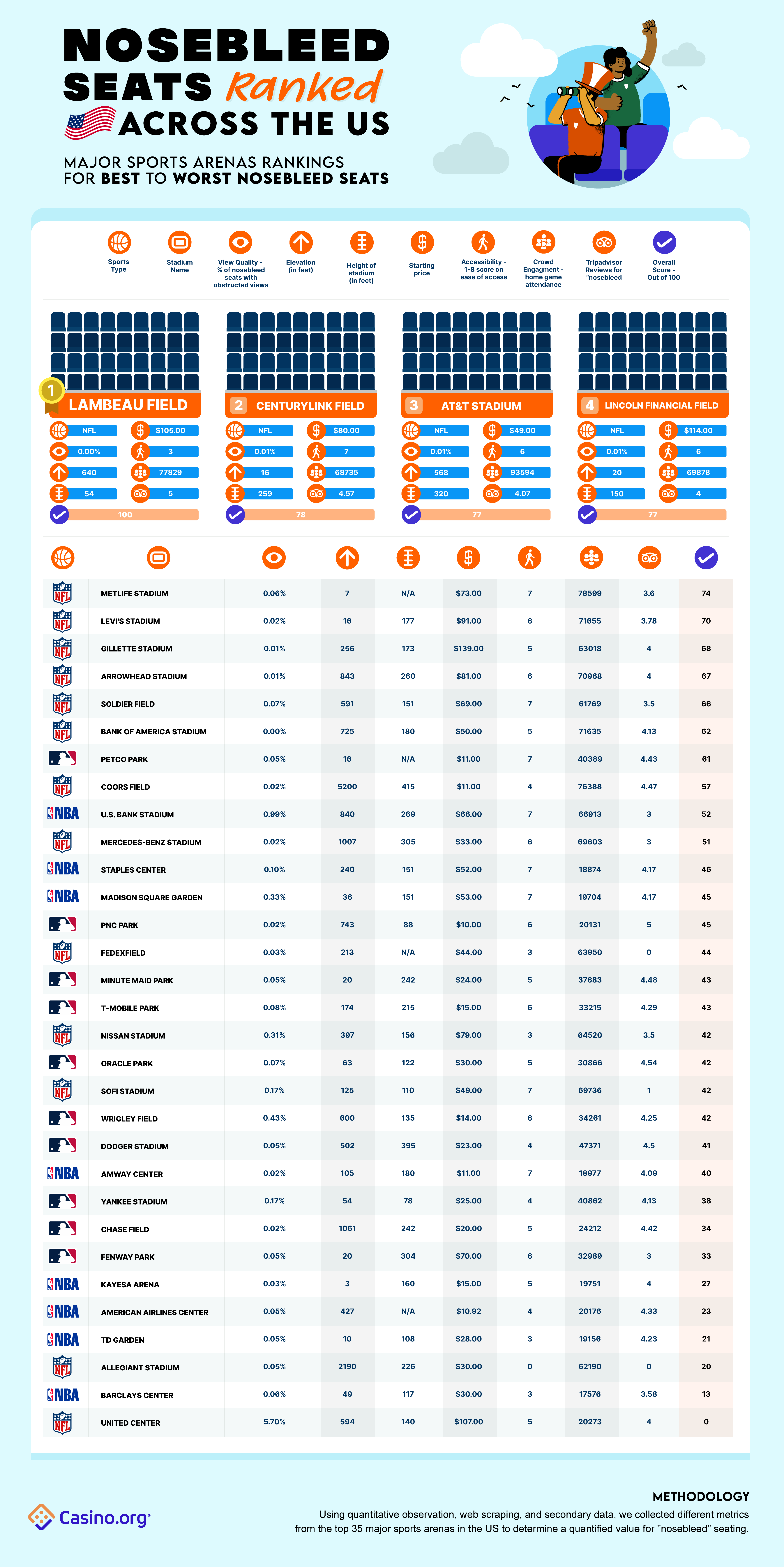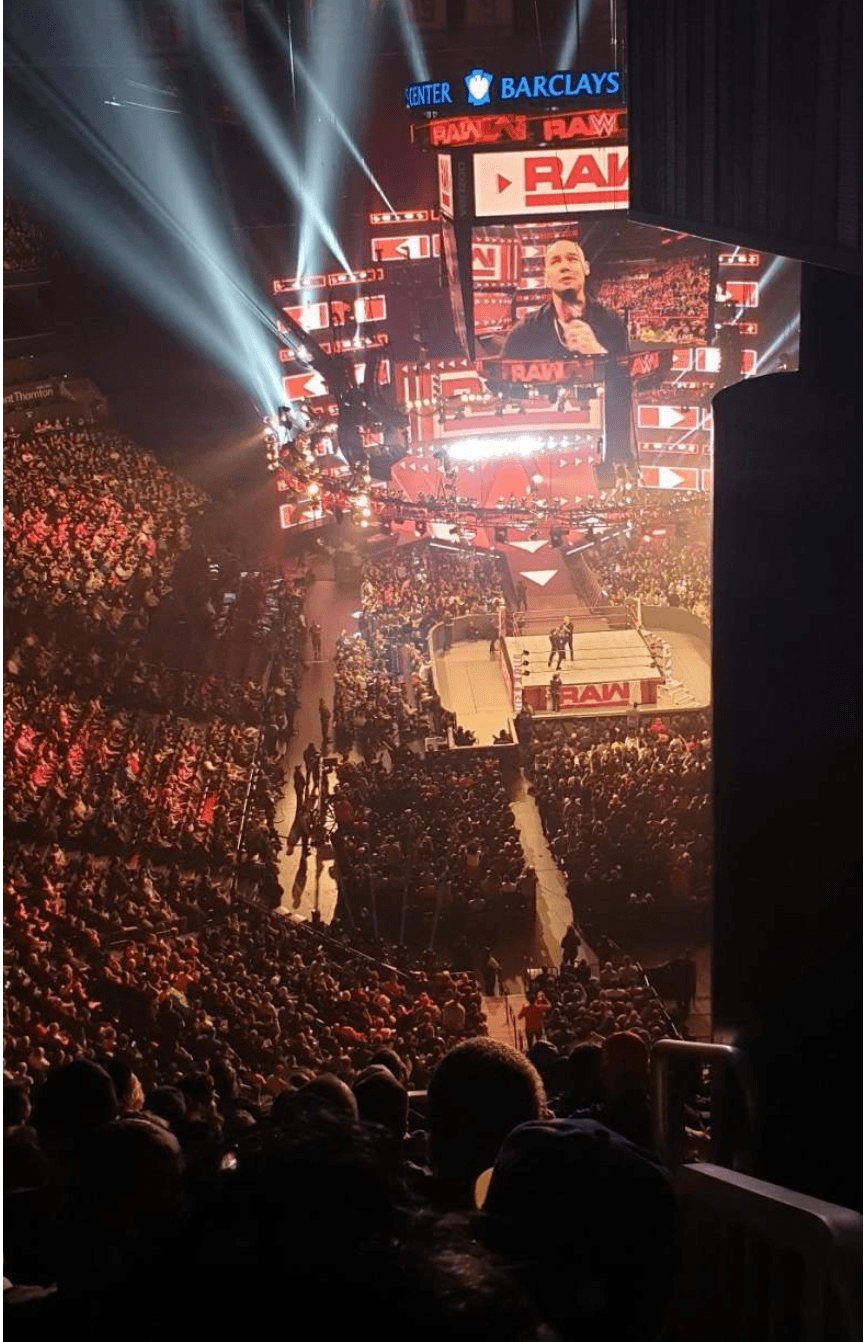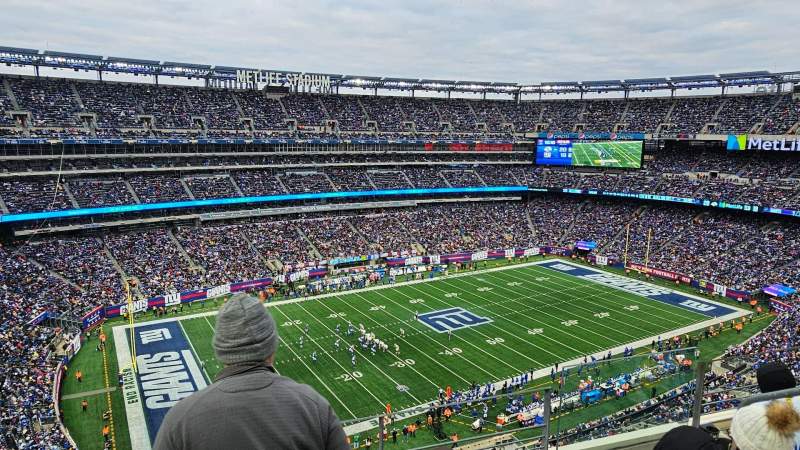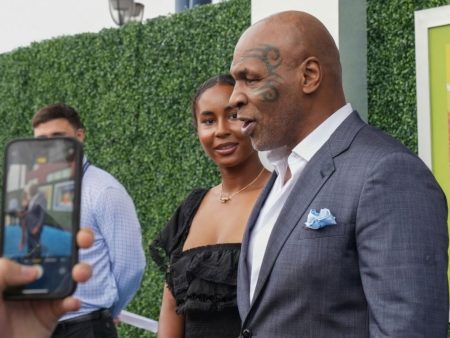Exploring the Best and Worst Nosebleed Seats in U.S. Sports Stadiums
Attending a major sporting event is thrilling, but for many fans, high ticket prices often mean soaring up to the “nosebleeds.” With Super Bowl LVIII’s upper-level seats listed at $6,000 and Perched 226 feet above the field—plus another 2,190 feet in elevation at Las Vegas’s Allegiant Stadium—it’s no surprise many fans question if the cheapest seats are really worth it. This sparked a deep-dive into what truly defines a great or not-so-great nosebleed seat, beyond just the price tag.
How We Assessed the Quality of Nosebleed Seats
Our research analyzed the top 35 U.S. sports arenas using a rigorous system. We examined:
– **View Quality:** The clarity and angle of the field or stage, factoring in sightline obstructions.
– **Seat Height & Stadium Elevation:** How far up you’ll sit and how much natural elevation adds to the experience—or discomfort.
– **Affordability:** The starting ticket price for upper-level seats compared to other sections.
– **Accessibility:** Ease of reaching the seats, referencing eight critical ADA (Americans with Disabilities Act) measures.
– **Atmosphere:** Crowd energy and engagement in the upper sections, often the heartbeat of game day excitement.
– **Fan Reviews:** Real experiences sourced from platforms like Tripadvisor, with an eye on mentions of the “nosebleed” experience.
Each metric was weighted by influence on overall experience, resulting in an index ranking stadiums from best to worst for nosebleed dwellers.
America’s Top Stadiums for Nosebleed Seats
Surprisingly, the highest seats aren’t always the least desirable. Some stadiums have managed to make their upper decks destinations in their own right.

Topping the list is **Lambeau Field**, home to the Green Bay Packers. Not only does it deliver excellent views even from the rafters, but the electrifying fan culture—backed by glowing Tripadvisor reviews—turns every seat into a party. Nosebleed seats start at $105, a premium for upper decks, but dedicated Packers fans describe the experience as the “holy grail of the NFL.”
Second place belongs to **Lumen Field** (formerly CenturyLink Field) in Seattle. Known for its record-breaking crowd noise and a design that keeps everyone close to the action, the stadium rates highly in both accessibility (perfect ADA score) and fan participation. Tickets for upper levels start at $80.
Rounding out the top three is **AT&T Stadium** in Dallas. Beyond traditional seats, the Cowboys’ home offers an affordable standing-room area for as little as $29, making the stadium accessible for more fans and turning game days into legendary Texas tailgates.
The Least Favorable Nosebleed Seat Experiences
Not all stadiums deliver magic in the nosebleeds. Certain arenas stood out for their steep climbs, obstructed views, and hefty price tags.
The **United Center** in Chicago, home of the Bulls, was rated the worst for nosebleed experiences. Despite a passionate 16.7-million-strong fanbase, fans find themselves ascending steep rows to seats 140 feet high—and shelling out minimum prices starting at $107 for the privilege.

In second place is Brooklyn’s **Barclays Center**. With a significantly lower nosebleed comfort score, many fans report clear sightlines only for non-sporting events, like concerts—but struggle to see the action for basketball or hockey.

**Allegiant Stadium** in Las Vegas—the NFL’s second-most expensive venue—also ranks near the bottom. Despite its modern design and price tag, upper-level fans face tough climbs, low accessibility scores, and are stuck far from the action, making it a challenging choice for passionate Raiders supporters.
Electric Atmosphere: Where Nosebleed Fans Bring the Energy
Atmosphere can transform any seat into a front-row experience. Nowhere is that more evident than at **AT&T Stadium** in Dallas, where 93,594 fans fill the stands on average. With one of the country’s most spirited crowds, the upper decks pulse with excitement—perhaps fueled by the Cowboys’ fame (and infamy).
MetLife Stadium, home to New York’s Giants and Jets, follows closely behind. While NFL players often rate the on-field experience poorly, upper-level fans insist the atmosphere above the turf is infectious, maintaining high attendance and palpable enthusiasm.

Which Sports Leagues Offer the Best (and Worst) Nosebleed Experiences?
Stadium shapes and sizes vary across leagues, and so does nosebleed seat quality.
– **NFL stadiums:** Offer the best overall upper-deck experiences, thanks to open sightlines and circular seating layouts. The top 10 nosebleed sections by our ranking are all NFL venues.
– **MLB ballparks:** Rank in the middle, where open-air and generally moderate elevations make most upper-level seats comfortable, even if distant.
– **NBA arenas:** Fared worst, plagued by sharply inclined upper sections and a greater proportion of obstructed view seats. Here, even dedicated fans might want to reconsider splurging for better placement.
The Highest Risk for Actual Nosebleeds: Altitude Challenges
Nosebleed sections can sometimes elevate the risk of, well, actual nosebleeds. High altitude, thin air, and dramatic temperature shifts play a genuine part.
**Coors Field** in Denver, home of the Colorado Rockies, sits 5,200 feet above sea level—the highest of any major U.S. sports venue. With air density just 82% that of sea level, fans and athletes alike contend with unique challenges. The stadium is even notorious for influencing game play, making it one of the most distinctive major league venues.
Conclusion: Where to Soar—and Where to Skip—the Nosebleeds
Whether you’re chasing a bucket-list view from Lambeau or seeking the roar in Lumen Field’s upper decks, not all nosebleed experiences are created equal. The best spots blend great sightlines, lively crowds, and accessibility. But beware venues like the United Center and Barclays Center if you want to avoid post-game regrets (or actual bloody noses).
Our Data-Driven Ranking Approach
To develop these insights, we gathered quantitative and qualitative data across 35 premier U.S. sports arenas. Selection was based on a blend of:
– **Capacity:** Focusing on stadiums with the largest seating counts
– **Historic Significance:** Including iconic venues with rich histories
– **Professional Sports Presence:** Only venues with active NFL, MLB, NBA, NHL, or MLS teams were considered
Each variable contributing to nosebleed experiences was scored and combined for our final rankings.
Usage and Attribution
Feel free to use our findings and infographics for non-commercial projects, provided you link back to this original source for proper credit.
For press inquiries regarding this analysis, contact the editorial team directly.








